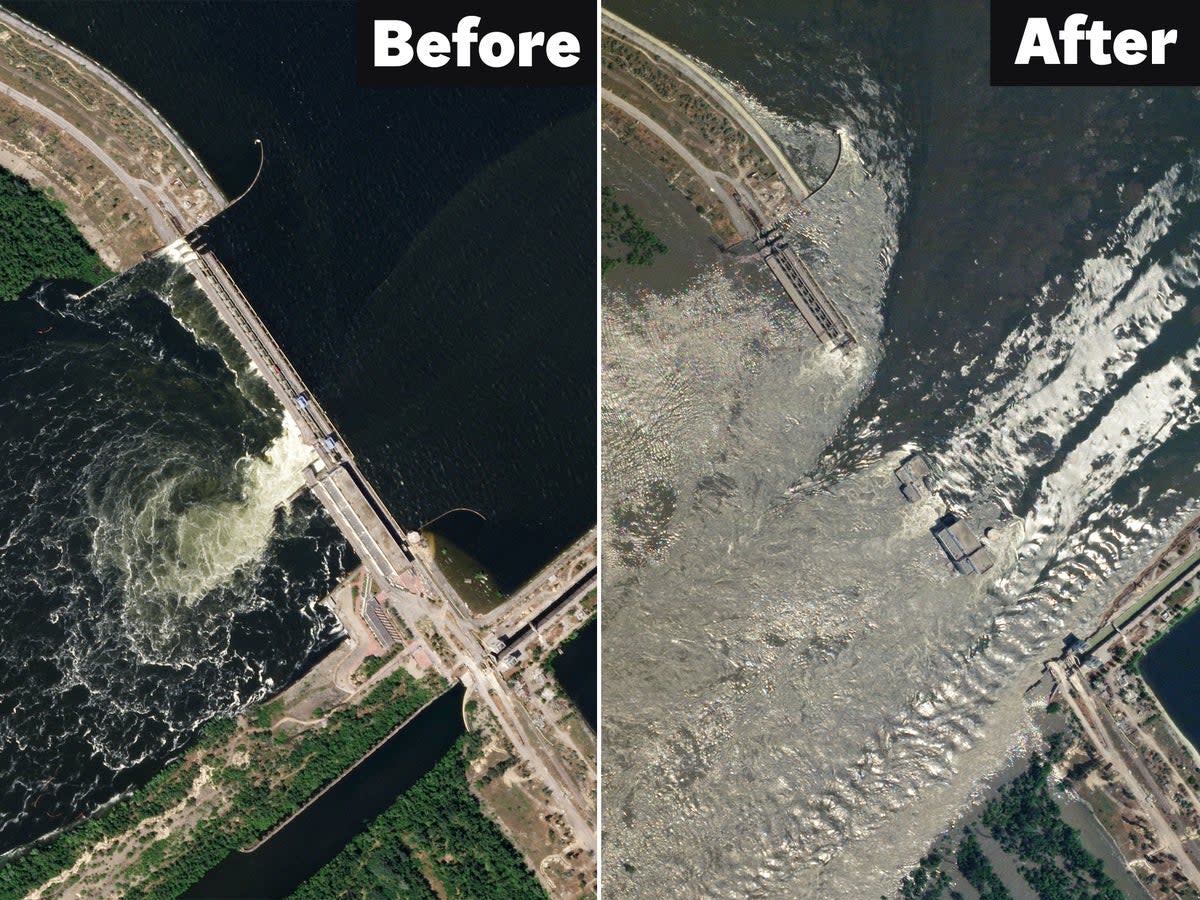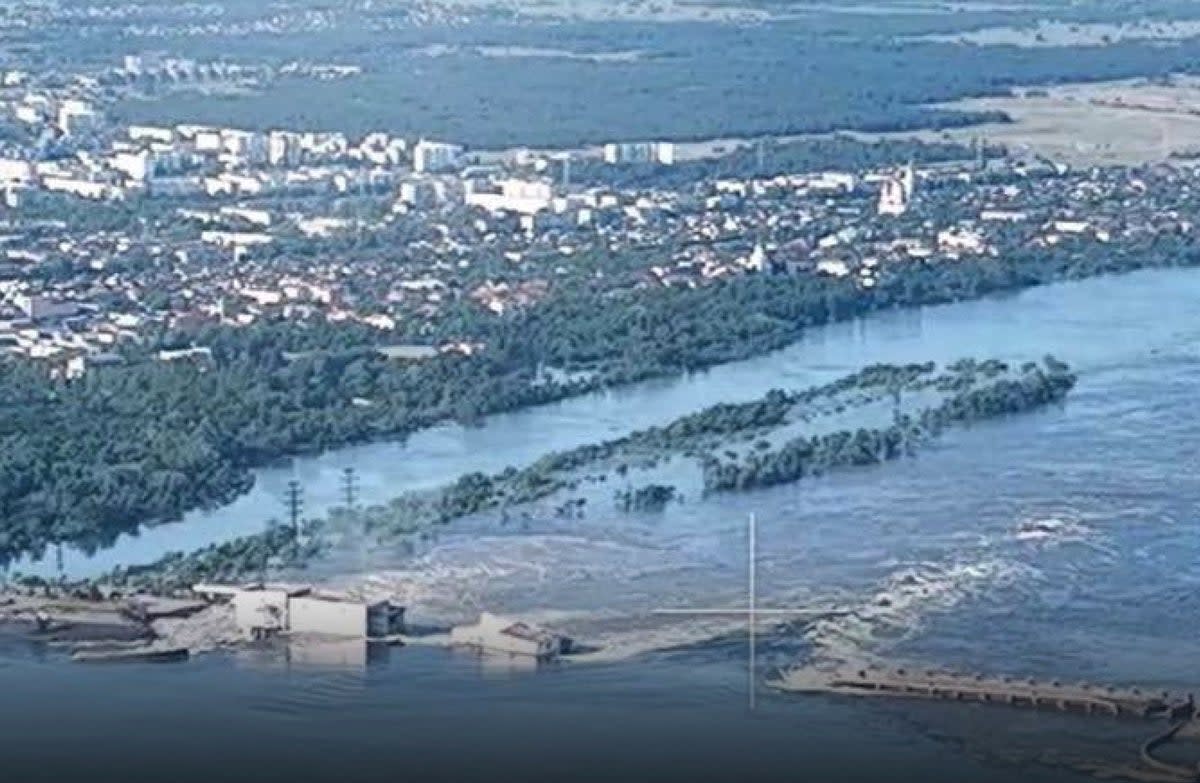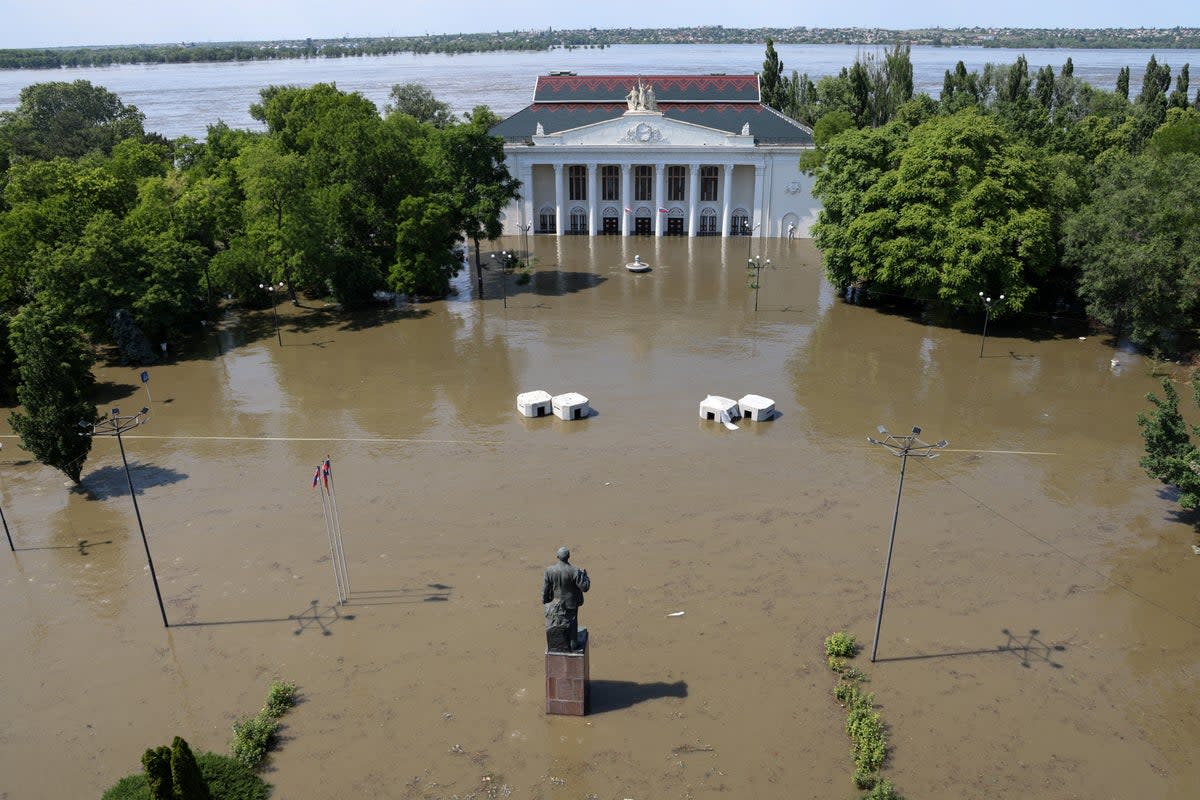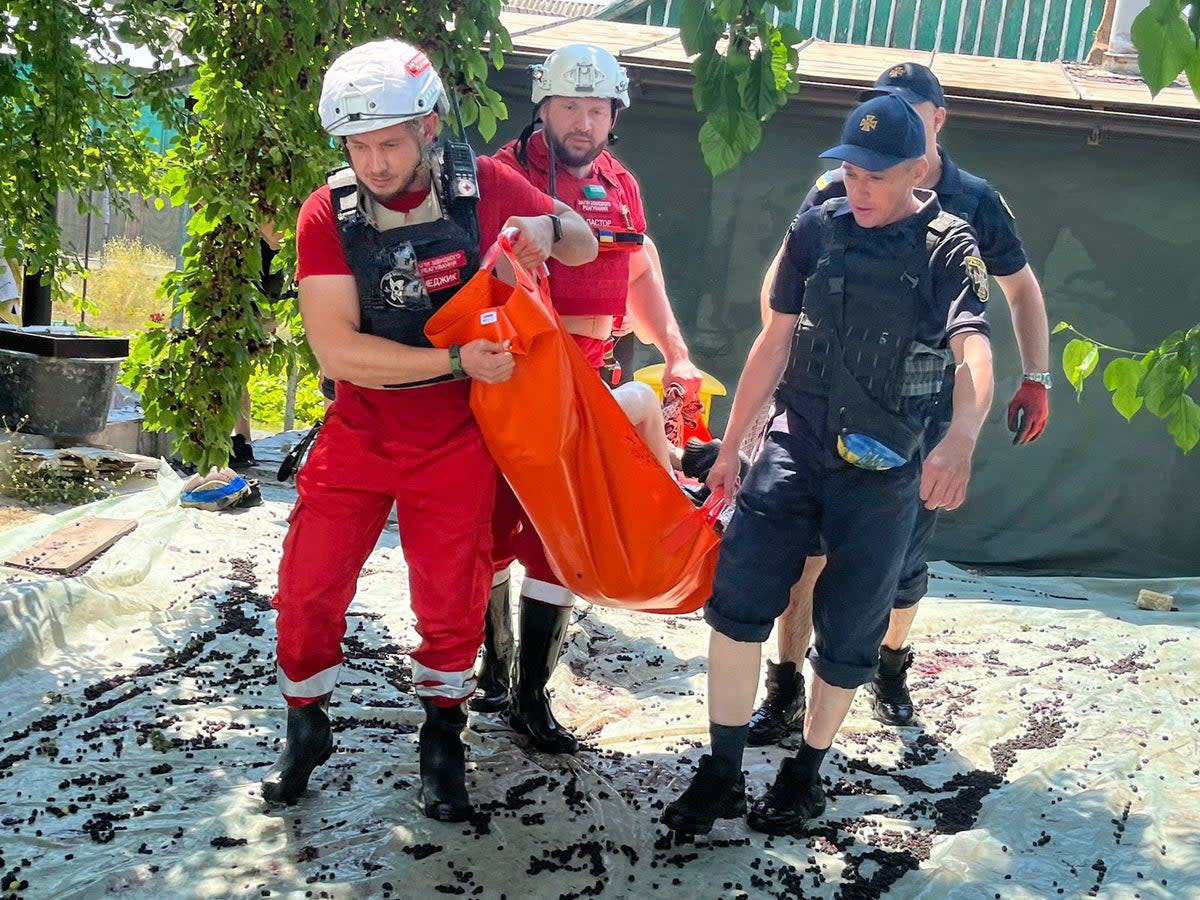Thousands face evacuation after destruction of huge Ukraine dam blamed on Russian forces
Thousands of people are being evacuated after a major dam was blown up in southern Ukraine – an act of destruction Kyiv blamed on Russia’s desperation to slow a Ukrainian counteroffensive.
The Nova Kakhovka dam – which Moscow’s forces have control of – sits on the Dnipro River, with Ukrainian and Russian troops controlling opposite banks.
Aerial footage showed a broad section of the dam had collapsed, unleashing a huge torrent of water from the reservoir behind – which was already sitting at record levels – towards dozens of towns and villages.

Ukraine’s president, Volodymyr Zelensky, called the destruction of the dam “a war crime” and an act of “terrorism” as well as the “largest manmade environmental disaster in Europe in decades”.
The water in the reservoir supplies a wide area of southern Ukrainian farmland, including the Russian-annexed Crimean peninsula, as well as cooling the Russian-held Zaporizhzhia nuclear plant.
The attack, which occurred early on Tuesday morning, raised fears over the safety of the plant, but the UN nuclear watchdog said that there was “no immediate risk” even if it were gradually to run out of cooling water. It added that other sources of water were available.
Around 40,000 people need to be evacuated, deputy prosecutor-general Viktoriya Lytvynova said on Ukrainian television – 17,000 people in Ukraine-controlled territory and 25,000 around Russian-controlled areas.
For its part, Moscow blamed the attack on Ukrainian shelling, with the Kremlin’s spokesperson, Dmitry Peskov, calling it “sabotage”.
Russian-installed officials had earlier given conflicting accounts, some saying the dam had been hit by Ukrainian missiles overnight, others saying it had burst on its own due to earlier damage. Some of the officials also sought to downplay the gravity of the situation.
The US government has intelligence leaning towards blaming Moscow for the attack, NBC News reported, citing two unnamed US officials and one Western official. The White House said that the US was assessing reports that the blast was caused by Russia.
In a Twitter post, Mr Zelensky dismissed Russia’s claim, saying: “It is physically impossible to blow it up somehow from the outside, by shelling. It was mined by the Russian occupiers. And they blew it up.”
Last November, Mr Zelensky said that he believed Russia had mined the hydroelectric station and was plotting to destroy it, suggesting this would cause a “a large-scale disaster”.
Mykhailo Podolyak, a chief adviser to President Zelenksy, told The Independent that he believed the goal for Russia was “to create obstacles for the offensive actions of the armed forces”, echoing earlier statements from Ukraine’s southern command that said it believes Russia blew up the dam to stop a Ukrainian advance across the Dnipro River.

“This once again confirms that the Kremlin does not think strategically, but in terms of short-term situational advantages,” Mr Podolyak added.
Moscow has sought to claim that the attack was a diversionary tactic by Ukraine, intended to distract from what it has claimed is a “failed” counteroffensive. That is despite the initial assaults by Ukrainian forces looking more like probing efforts to ascertain weaknesses in Russian lines.
Mr Podolyak also warned of a “global ecological disaster” that will affect worldwide food security. He told The Independent that the millions of cubic metres of water that had already partially submerged several areas and killed thousands of animals would in a few days reach as far as Mykolaiv, a region some 90km (56 miles) away, leaving destruction in its wake.

Compounding the crisis is the fact that at least 150 tonnes of machine oil from the hydroelectric plant have already entered the Dnipro River, and there is a risk of further leakage of more than 300 tonnes.
“There is no doubt that this will lead to large-scale environmental, economic and human consequences. And the results of such a war crime are equivalent to the use of unconventional weapons,” he said.
“The instantaneous death of a large number of fish and animals, the waterlogging of drained [agricultural] lands, and the change in the climatic regime of the region, will later be reflected in the food security of the world.
“A one-time reduction of water in a huge reservoir will [also] lead to unpredictable ecological consequences,” Mr Podolyak added.

“We already know about the mass death of animals, in particular, in the local zoo,” Mr Podolyak said, a reference to the Kazkova Dibrova zoo on the Russian-held riverbank, which was completely flooded. A representative said via the zoo’s Facebook account that all of its 300 animals had died.
Any potential death toll was not immediately clear, but a spokesperson for the White House, John Kirby, said the attack had probably caused “many deaths”.
The small town of Oleshky, on the Russian-controlled bank, was almost completely flooded, a Russian-backed official said. “Evacuation ... is possible only using special equipment,” Andrei Alexeyenko, chair of the Russian-appointed government of Ukraine’s Kherson province, said on Telegram.

The Moscow-installed mayor of the town of Nova Kakhovka said the water level had risen to 11 metres (36ft). He did not say how high the water level was before the dam burst.
Some residents on the Russian-controlled bank had decided to stay in their homes. Yevheniya, a female resident, told reporters via telephone that the water was up to the knees of the Russian soldiers walking along the main street in high rubber boots. “If you try to go somewhere they don’t allow, they immediately point their machine guns at you,” she said. “More and more water is coming every hour. It’s very dirty.” A man, Hlib, said Russian troops “say they are ready to shoot without warning”.
Western allies of Ukraine lined up behind Kyiv.
“The destruction of Kakhovka dam is an abhorrent act. Intentionally attacking exclusively civilian infrastructure is a war crime,” the UK’s foreign secretary, James Cleverly, said.
The Nato secretary general, Jens Stoltenberg, called it “an outrageous act, which demonstrates once again the brutality of Russia’s war in Ukraine”.
